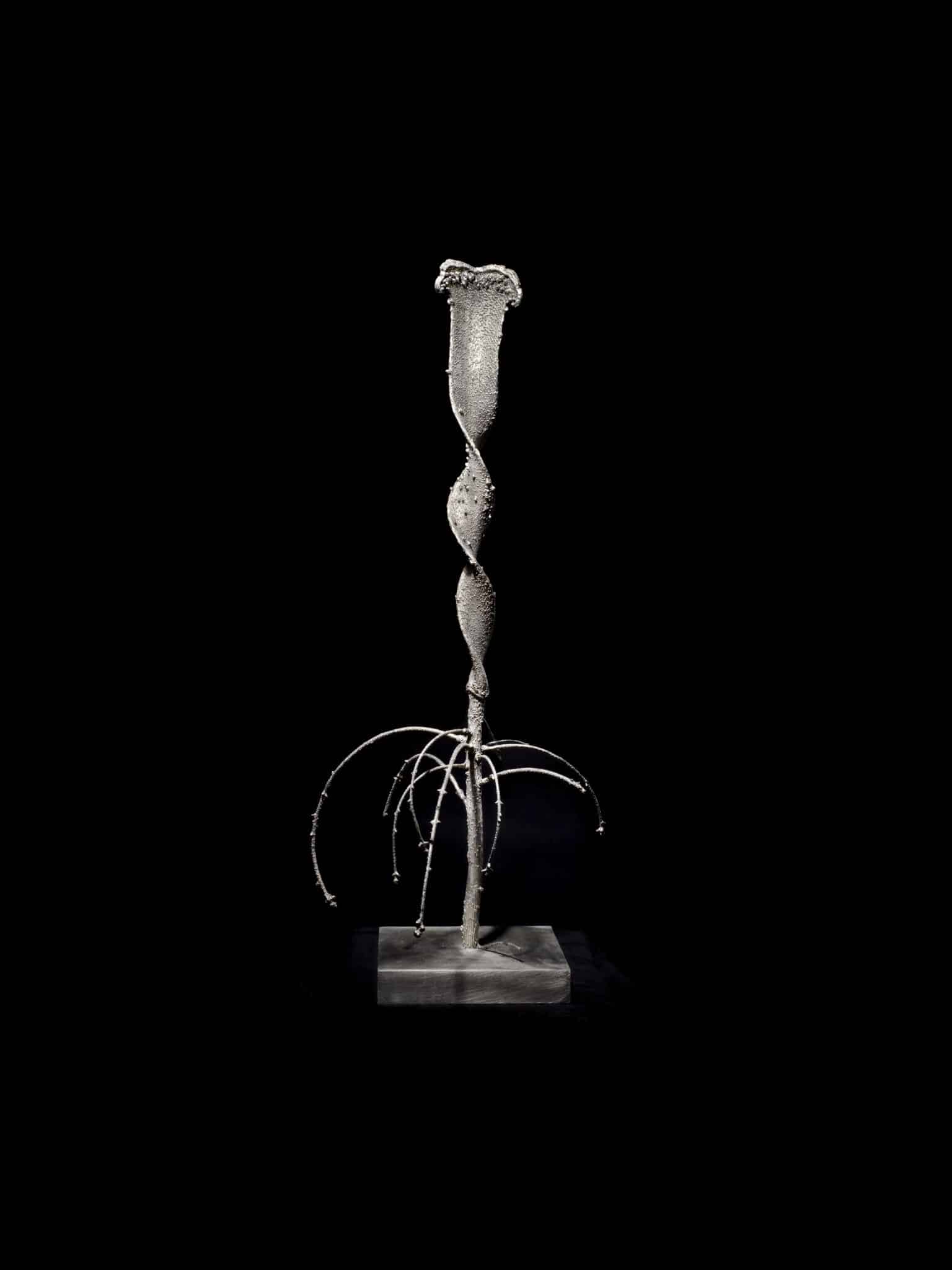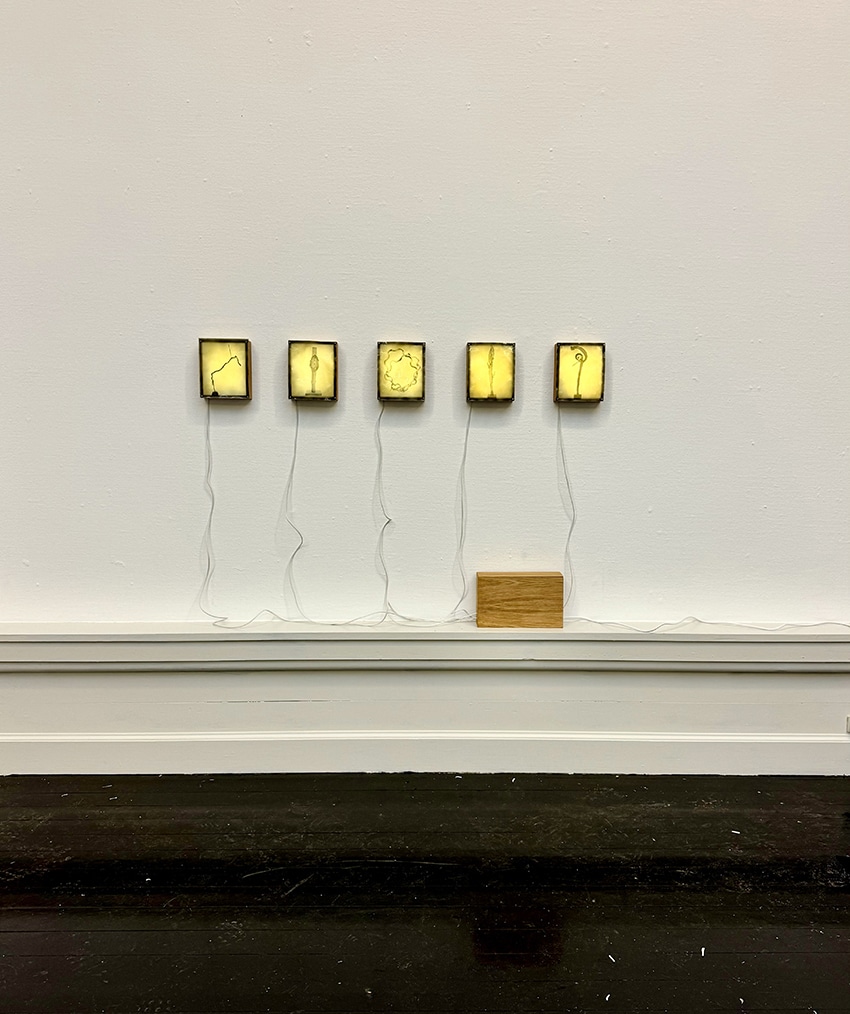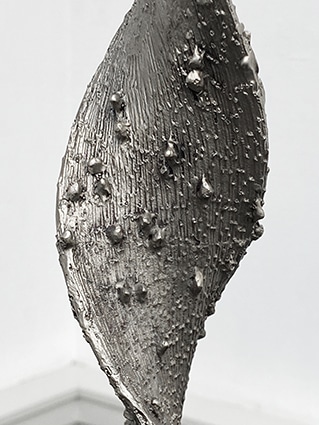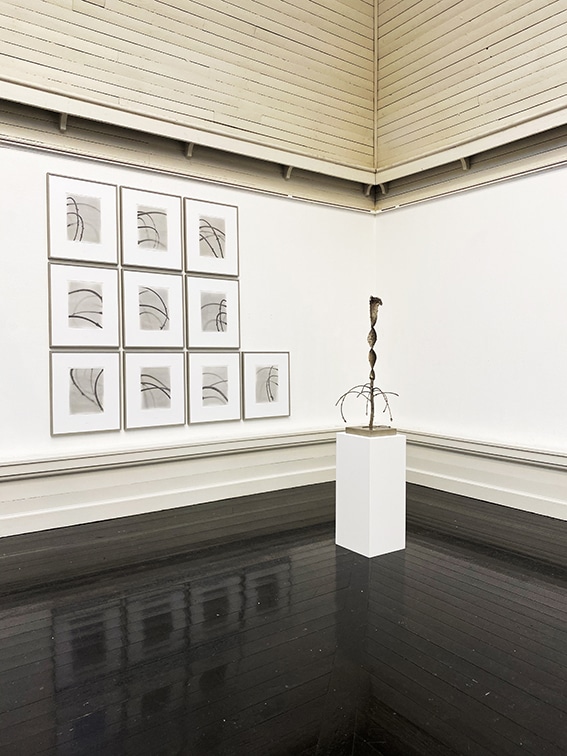FASCIATION
- copyright — @ Nicolai Howalt
- year — 2023
- edition — 5
- size — Different sizes
- material — unique photographic celluloid print, light box, 22 x 18,5 x 6 cm. & sculpture in silver.
Fasciations are rare growths that can be found in nature and in cultures. The etymology comes from the Latin fascia (bands, stripes).
Fasciation (2020-2023) is an opportunity for Nicolai Howalt to focus on anomalies, another reality of life. Fasciations are rare growths that can be found in nature and in cultures. The etymology comes from the Latin fascia (bands, stripes). Depending on certain genetic, bacterial, hormonal or environmental conditions, the fasciations result from the abnormal development of the apical meristem (the tissue of rapidly multiplying embryonic plant cells). They can affect several plant organs (stems, flowers). The collection of these plants began in the nineteenth century in order to establish whether these malformations originated from the possession of plants by supernatural forces or whether they had a scientific explanation. Nicolai Howalt is captivated by these malformations that he discovered for the first time in a museum. Nature’s capacity to give rise to uncontrollable, fantastic and marvellous figures, to abstract narratives, is a source of fascination for him. Observing and recording the complex mathematics of these fractal structures, their geometry at a microscopic level, stimulates and motivates the photographer to capture them in their every detail. He photographs fragments of a tree affected by fasciation and this corpus of work resonates with a silver sculpture that is the precise replica of the shrub he was examining. The ensemble therefore bears witness to the fundamental principles of growth and forms the basis of an imaginary which, when it invests reality, becomes almost unimaginable.








